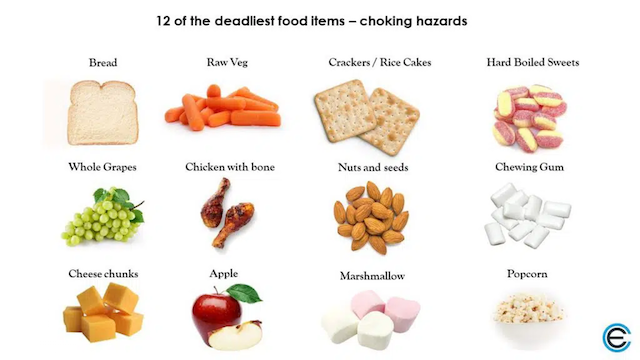
The annual World Food Safety Day, 7 June draws attention to choking hazards for young children. This year’s theme highlights the importance of being prepared to effectively resolve food safety incidents.
How to mitigate choking and choking related deaths, especially as they are preventable, is paramount in promoting safe food consumption and preparation.
A new report by CE Safety has analysed ONS data to investigate choking related deaths from 2018 to 2022. According to St John’s Ambulance, 80 percent of parents feel unsure about how to properly act when witnessing their child choking – this is worrying given how many incidents there are.
CE Safety’s findings revealed that children aged between one and four years old are most at risk of choking: 49 deaths between 2018 and 2022 were due to or involved choking.
The second most at risk age group were children under one, with 28 choking deaths. The findings also found that six children under five and six children under ten have died due to choking on food over the last five years.
To prevent choking and encourage preparedness in the event of one, the report includes:
- Tips for parents and caregivers on how to prevent choking from happening.
- A visual guide on what to do when witnessing a choking.
- Advice for adequate food preparation.
Top tops for parents and carers
- Always supervise small children closely during meals; direct supervision is essential.
- Avoid offering drinks while a child is eating. This practice is often used to help food go down, but it can increase the risk of choking.
- Discourage eating while lying down.
- Ensure that children sit upright while eating.
- Discourage children from eating while walking, riding in a car, or playing.
- When preparing food for children, remember to cut it into small, manageable pieces and remove any seeds or pits. For vegetables, consider cooking or steaming them to make their texture softer.
- When selecting foods for young children, consider shape, size, consistency, and combinations to minimise choking risks.
- Be attentive to potential choking hazards among foods, toys, and household items to prioritise child safety.



